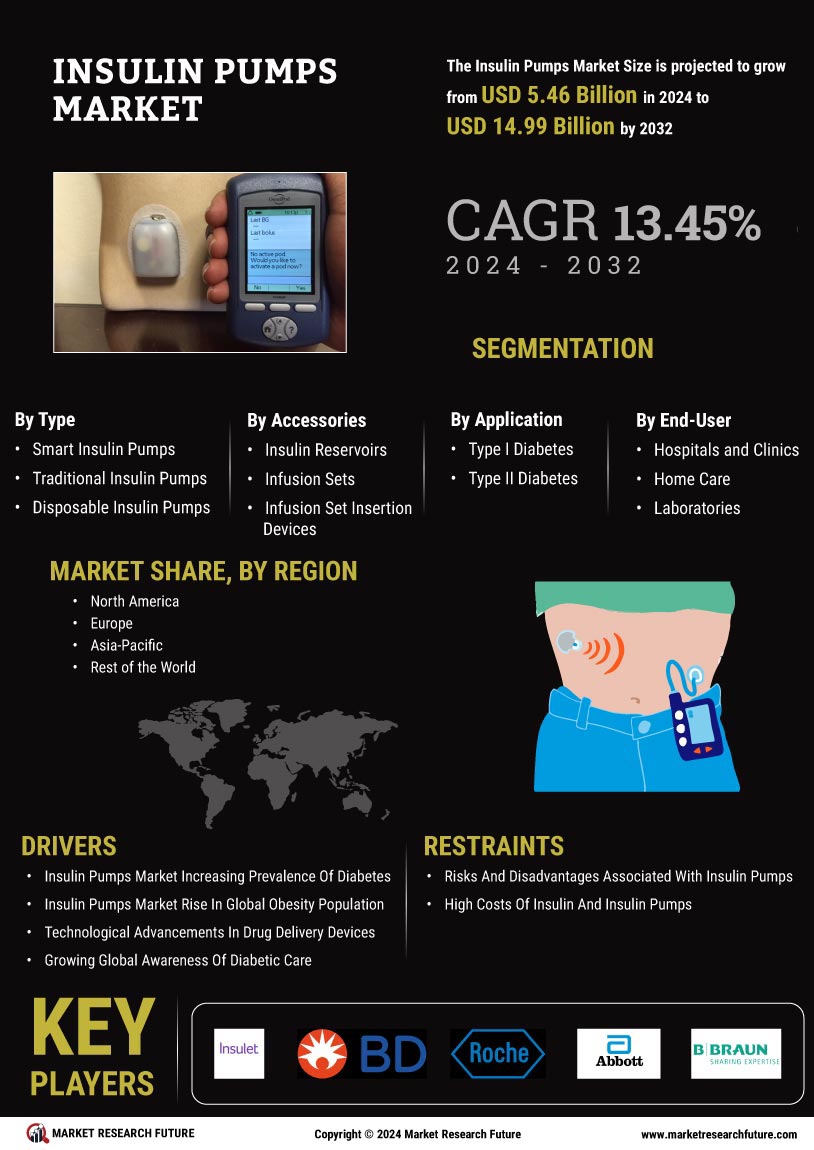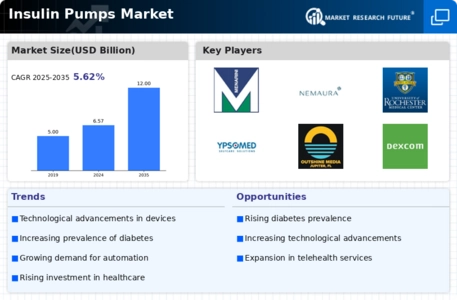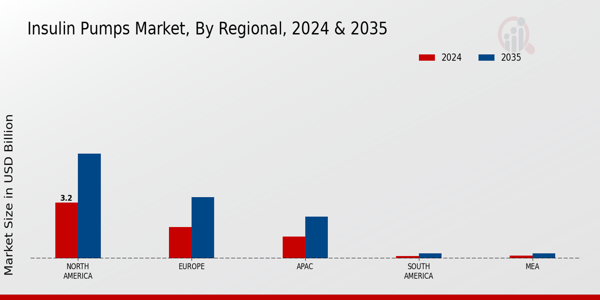Market Growth Projections
The Global Insulin Pumps Market Industry is poised for substantial growth, with projections indicating a market value of 6.57 USD Billion in 2024 and an expected increase to 12 USD Billion by 2035. This growth trajectory suggests a compound annual growth rate of 5.63% from 2025 to 2035. Factors contributing to this expansion include rising diabetes prevalence, technological advancements, and increased awareness of diabetes management. The market's evolution reflects a broader trend towards innovative healthcare solutions that enhance patient outcomes. As the industry continues to develop, stakeholders are likely to witness significant opportunities for investment and growth.
Rising Prevalence of Diabetes
The increasing incidence of diabetes globally serves as a primary driver for the Global Insulin Pumps Market Industry. With an estimated 537 million adults living with diabetes in 2021, this number is projected to rise significantly. The World Health Organization indicates that diabetes prevalence is expected to double by 2030, thereby intensifying the demand for effective management solutions. Insulin pumps, which provide continuous insulin delivery, are becoming increasingly popular among patients seeking better glycemic control. As the market is valued at 6.57 USD Billion in 2024, the growing diabetic population is likely to propel the industry further.
Increased Awareness and Education
Growing awareness about diabetes management and the benefits of insulin pumps is significantly influencing the Global Insulin Pumps Market Industry. Educational initiatives by healthcare organizations and patient advocacy groups are fostering a better understanding of diabetes care. This heightened awareness encourages patients to seek advanced treatment options, including insulin pumps, which are associated with improved quality of life. As a result, the market is experiencing a steady increase in adoption rates. The anticipated compound annual growth rate of 5.63% from 2025 to 2035 reflects the positive impact of education and awareness on market growth.
Growing Demand for Personalized Medicine
The trend towards personalized medicine is reshaping the Global Insulin Pumps Market Industry. Patients are increasingly seeking tailored treatment options that align with their individual health needs and lifestyles. Insulin pumps offer customizable settings, allowing users to adjust insulin delivery based on their specific requirements. This personalization enhances patient satisfaction and adherence to treatment regimens. As the market evolves, the demand for personalized diabetes management solutions is expected to rise, contributing to the overall growth of the industry. The anticipated market value of 12 USD Billion by 2035 underscores the importance of personalized approaches in diabetes care.
Technological Advancements in Insulin Delivery Systems
Innovations in insulin pump technology are transforming the Global Insulin Pumps Market Industry. Recent advancements include the development of smart insulin pumps that integrate with continuous glucose monitoring systems, allowing for real-time data analysis and automated insulin delivery. These enhancements not only improve patient adherence but also optimize glycemic control. For instance, hybrid closed-loop systems are gaining traction, providing patients with a seamless experience. As the market is projected to reach 12 USD Billion by 2035, the continuous evolution of technology is expected to play a pivotal role in driving growth and enhancing patient outcomes.
Supportive Government Policies and Reimbursement Frameworks
Government initiatives aimed at improving diabetes care are bolstering the Global Insulin Pumps Market Industry. Many countries are implementing favorable reimbursement policies for insulin pump therapy, making these devices more accessible to patients. For example, several national health services are covering the costs associated with insulin pump therapy, thereby reducing the financial burden on patients. This support is crucial in encouraging the adoption of insulin pumps, particularly in regions with high diabetes prevalence. As the market continues to expand, supportive government policies are likely to play a vital role in facilitating access to advanced diabetes management solutions.



















Leave a Comment